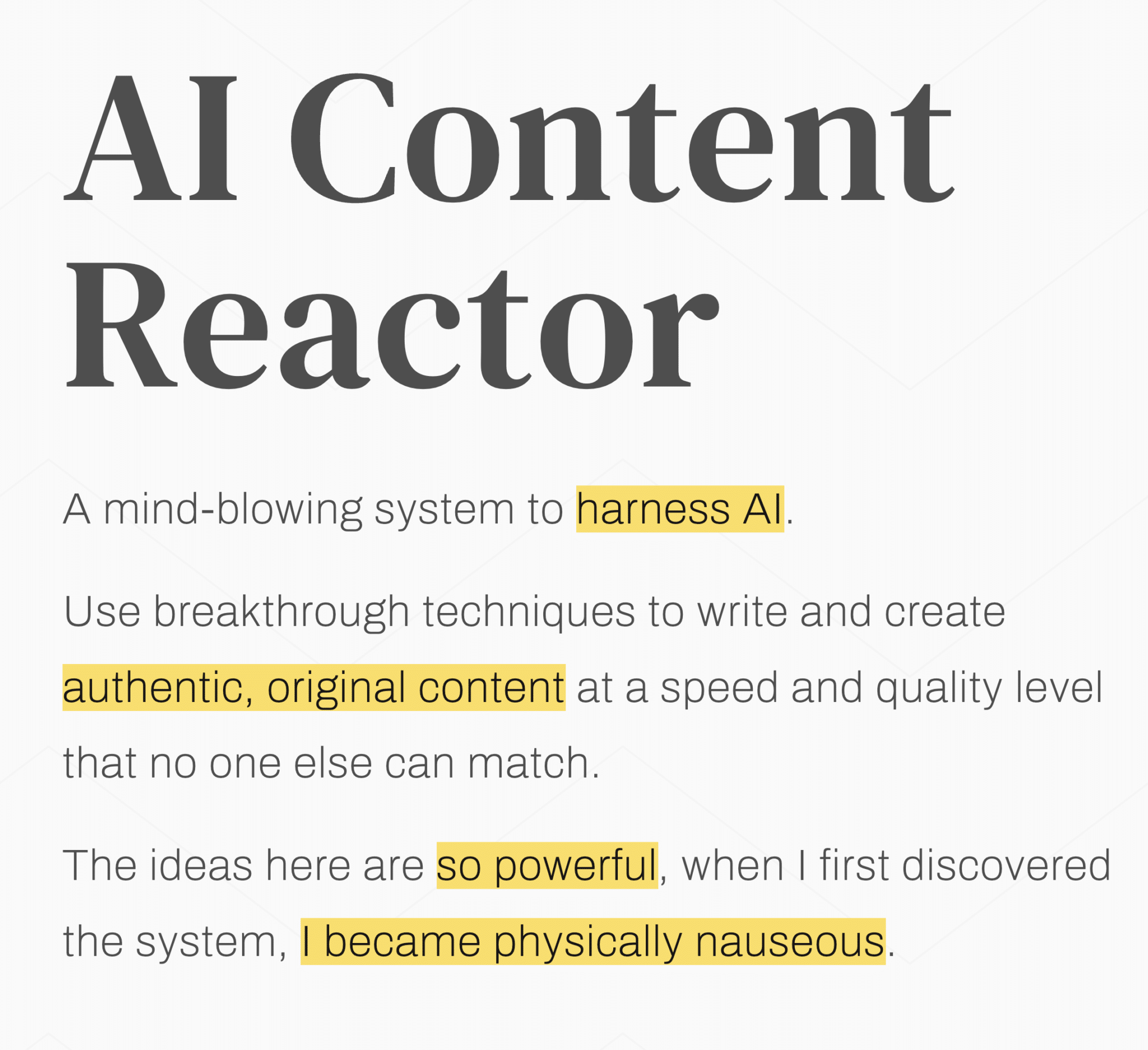Allow me first to set the stage for this post. I’ve been managing a marketing and SEO agency since the early 90s. We work directly with companies and as a white-label agency, which has given us broad experience across different types of work and clients.
Like many agencies, we’ve always used a data-driven approach. We make decisions based on data analytics, actionable insights, years of experience, and gut feelings. Bypassing the small talk, I insist on talking to the decision-maker so our recommendations have a higher-than-average chance of being implemented. And “therein lies the rub.”
Table of contents
Bureaucracy, Trust, and Red Tape
Recommendations: few things are more frustrating than when carefully crafted recommendations are ignored. Especially when you know your agency provides high quality SEO, content, and digital strategy services, watching suggestions sit untouched can get under the skin.
It doesn’t happen often, but it does happen, and to a lot of agencies. Although I don’t take it personally, the fact that it happens at all has been bugging me. The question is this: Why hire an agency and not implement what the agency recommends?
I’ve come to the following conclusion.
While large corporations often have layers of approvals and compliance hurdles, the real problem often isn’t bureaucracy. It’s not that you have the wrong target market; it’s trust. If a company fully believed in the agency (or agency liaison), execution wouldn’t be such an uphill battle.
This lack of trust can undermine even the most well-planned marketing campaigns. Lack of implementation makes it difficult to showcase the benefits of your carefully planned data-driven strategies. You know what you provide will help the client and enhance performance, but they don’t.
After a few years of collaboration, your client is bringing in another agency to assess growth. Or, more likely, to audit your work. Their customer satisfaction is at a low, mostly because they haven’t done anything, so nothing has changed.
Sound familiar? Many long-term marketing agencies face this situation, as well. It can feel like an unnecessary test of your credibility.
So what’s the bottom line? Maybe it’s unnecessary, maybe it isn’t. But overall, it’s also an opportunity to take control of the narrative.
The Core Issues Agencies Face
Data visualization and clear reporting can help bridge the gap. These tools help prove that your strategies work for long-term success. But you have to implement first for the visualizations to make a difference. And we can’t ignore that marketing and SEO have always had the stigma of “snake oil sales,” adding to the difficulty.
Here are some of the snags we and our agency peers can run into.
Trust Deficit
I’ve noticed a marked difference in the level of trust depending on whether we’re acting as a white-label agency or a full-service agency working directly with the client. When supporting our peers, we don’t run into distrust. Why? Because the agency team members already know what works and need an extra hand or pair of eyes.
Implementation is usually easier with business clients when there’s a marketing team for the same reason. Marketing teams may rely on you, but higher-ups may still need convincing.
Also, there are bad actors in our field. We’ve had several clients come to us after they had a poor experience with someone claiming to be an SEO. They were scammed, and they came to us hoping that it was just a fluke while fearing that fraud is the norm.
Sadly, I’m positive we’re not alone in that situation, especially as a white-label agency.
Internal Bureaucracy
Most of the time, the resistance isn’t personal, it’s the nature of a rigid corporate structure. Corporate processes can slow everything down, requiring multiple approvals before anything changes. Wisdom is in understanding the difference between the bureaucratic tape and a trust issue.
Shiny Object Syndrome
Decision-makers often chase new trends, assuming a different agency might have the “secret” to explosive growth. Traffic isn’t growing fast enough. Leads aren’t signing on fast enough. They dropped three points in rank yesterday at 10 PM.
These concerns can lead the client to seek validation from another team instead of implementing the strategies they already paid for.
Fear of Change
Even data-driven recommendations can be met with skepticism if leadership isn’t entirely on board. Also, some companies hesitate to alter their website, content, or strategy because they fear breaking what already works.
Misalignment in Goals
You might be aligned with the marketing team, but leadership might have different priorities or expectations. They may have unrealistic goals. If results don’t match an internal (often flawed) metric, they may question the agency’s value.
How Agencies Can Overcome These Challenges
Sometimes, there’s nothing you can do about it. Sometimes, for multiple reasons, you and the client don’t work out. However, for most, there are ways to overcome the challenges and build trust.
Build Stronger Internal Relationships
Internal relationships are your advocates within the company. I feel like I’m always talking about “being genuine,” but I also think it’s an elephant in the room. As marketers, we’re often automatically suspected of being duplicitous. We sell (or market) for a living, right?
That’s why building genuine, honest relationships is even more important.
Identify and cultivate allies within the company, whether it’s the marketing director, SEO manager, or a key executive. Help them become your internal advocates to push for implementation.
Share the Quick Wins
I’ve noticed that some marketers like holding the data close to their vest until a big win comes around. Who can blame them? Big wins are fun to share! But big wins don’t happen every day, while quick wins happen much more often.
Did a particularly tough keyword jump a few ranks? Did a new landing page get its first lead? Share those wins right away.
Quick wins enhance your perceived value, building trust in small, manageable steps instead of big leaps. They also fuel the client’s motivation to go on to bigger and better things.
Speak Their Language
As I often remind our team, not everybody understands what “jump links” are. We have clients who get confused by “gone up a few points in ranking.”
The point is, use your words, not your industry jargon. It’s tough to buy in to something you don’t understand.
“Your terms jumped five points in ranking on average, and the CTR has gone up 2%. Impressions are holding steady, and…based on this data, we want to update your content, internal linking, and site functionality to do xyz.
Educate, Don’t Just Deliver
Instead of just handing over recommendations, explain why they matter.
Watch for that “deer in the headlight” look whenever you meet with clients so you know when you’ve lost them. I’ve made it a part of our meeting process to tell the client, “If we say anything you don’t understand, please feel free to ask questions.”
Some people think this is akin to educating your client to leave you. I disagree. Instead, it’s educating your client to work more closely with you. Clients who understand the “why” are more likely to implement the “how.”
Provide Implementation Support
Sometimes, clients don’t execute because they lack internal resources. How do you reduce friction and frustration on both sides?
If they don’t have an in-house developer or copywriter, offer your team or trusted partners who can implement changes. This removes a significant hurdle for companies that want to see improvements but can’t manage the extra workload.
If time isn’t a resource you regularly have available, create “plug-and-play” solutions. These solutions can be simple checklists, video tutorials, or detailed SOPs. They can dramatically speed up your client’s ability to implement.
Hold Them Accountable with Data
Nothing communicates urgency and validates your recommendations like cold, hard numbers. When leadership or other stakeholders see the costs of inaction stacking up, they’re more likely to prioritize your solutions.
Highlight missed opportunities or competitor advantages. Side-by-side competitor comparisons are an excellent tool to showcase how similar strategies have helped competitors to grow. For example:
- “XYZ competitor has XYZ page that has (directly or indirectly) impacted how many people are funneled to your sales pipeline…”
- “Your top competitors have these metrics. Here’s where we need to be to outrank them.”
You can also use A/B testing. Recommendations from testing can be easier to sell because you aren’t changing what they had before they know it works.
A final word on this section. Don’t get lost in vanity metrics. Translate rank jumps, CTR lifts, and increased traffic into benefits they can understand, such as revenue gains or lead quality. If traffic is down but engagement is up, explain why that can be good.
Anticipate External Audits
No agency wants to hear, “We’ve brought in someone else to take a look.” But, instead of dreading another agency’s involvement, position yourself as the team already solving problems. It’s an opportunity to underscore your value and expertise.
Prepare detailed documentation on past wins, completed optimizations, and unrealized potential (due to client inaction). This paper trail makes it easy to demonstrate what’s been done and what still needs work. By being proactive, you control the narrative instead of reacting to external scrutiny.
Offer to share insights, data, and historical context. You want to be seen as a cooperative partner rather than a defensive competitor. It reassures the client that you aren’t hiding anything and can build respect with the auditing agency.
When to Walk Away
At some point, you have to ask: Is this worth it?
- If a client continuously ignores recommendations yet questions performance, that’s a red flag.
- If they refuse to implement but blame the agency for lack of progress, that’s another red flag.
- It may be time to reassess if they bring in another agency, not to complement your work, but to second-guess it.
Firing a client isn’t a failure. It’s an acknowledgment that your time is better spent with companies that trust and implement your expertise.
Conclusion: Trust the Process and Your Expertise
Bringing in another agency isn’t always about performance. It can also be a trust issue. Some companies will always seek external validation, no matter how much value you provide. As frustrating as that may be, the question isn’t always whether you’re doing good work.
Our industry is a proud one, for all its lack of standardization mixed with a dearth of experimentation. It’s exciting and fresh, wild and tiring. It can be highly frustrating when you can’t share that excitement with your client for lack of trust. The key is making it as easy as possible for them to understand the value of your work.
As a marketer or a white-label agency, how have you dealt with situations like this? What about as a client? We’d love to hear your feedback and thoughts about building client relationships from both sides.



































